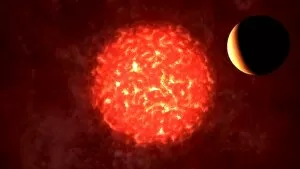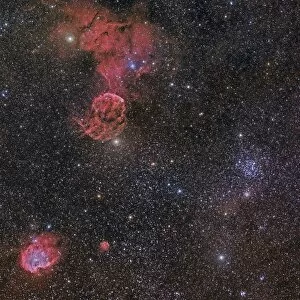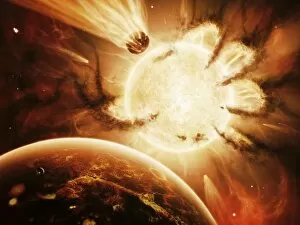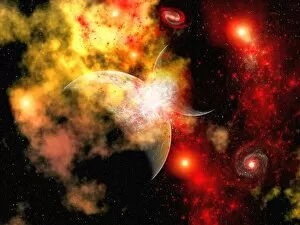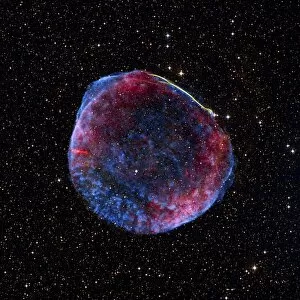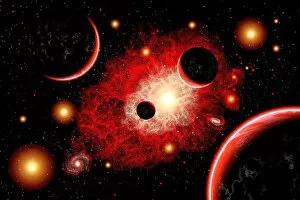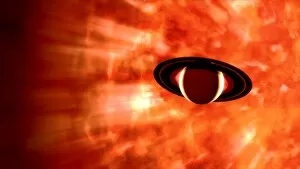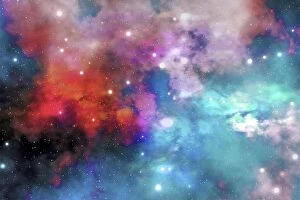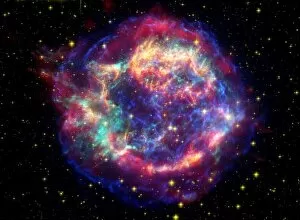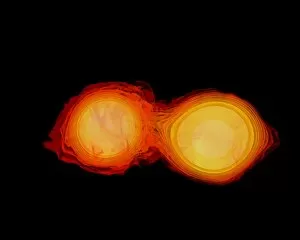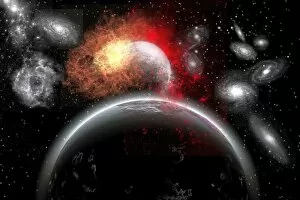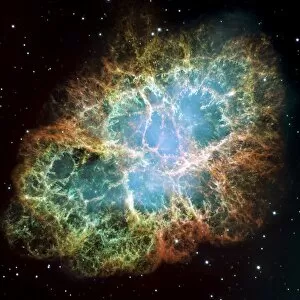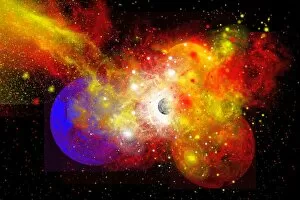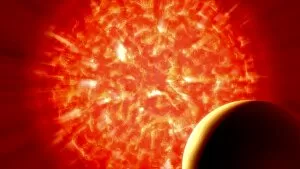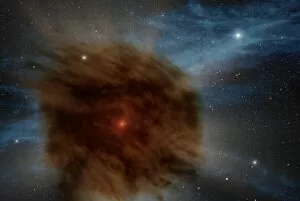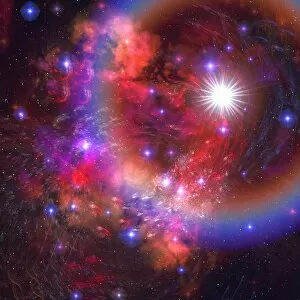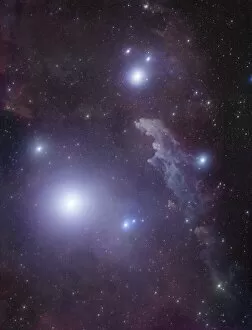Supernova Collection (page 2)
"Exploring the Cosmic Spectacle
All Professionally Made to Order for Quick Shipping
"Exploring the Cosmic Spectacle: Supernova Unveiled" Witness the mesmerizing aftermath of a supernova explosion as the Cygnus Loop Supernova Blast Wave ripples through space. Behold the captivating beauty of the Amazing Crab Nebula, a celestial masterpiece formed by a supernova remnant. A stunning composite image reveals the intricate details of the Crab Nebula, showcasing its vibrant colors and ethereal glow. Immerse yourself in an artistic interpretation of a supernova explosion, where cosmic forces collide to create breathtaking phenomena. Discover the enchanting allure of The Orion Nebula, where stellar birth and death dance together in a celestial ballet. Explore Vela's mysterious center within the Gum Nebula area, home to remnants from an ancient supernova that still captivate astronomers today. Gaze upon Altair, one of Aquila's brightest stars that has witnessed countless cosmic events including awe-inspiring supernovae. Marvel at The Whirlpool Galaxy and its companion galaxy as they showcase their gravitational interaction amidst swirling cosmic dust clouds. Journey to SN1987A in the Large Magellanic Cloud - witness this historic supernova event that forever changed our understanding of stellar evolution. Delve into fascinating studies on how different elements interact during a supernova explosion, unraveling mysteries hidden within these cataclysmic events. Step back in time with "Three Magi Following the Star of Bethlehem, " capturing humanity's fascination with celestial wonders throughout history (1925 lithograph). Encounter Tycho Brahe's portrait (1546-1601), an influential astronomer who meticulously observed and documented numerous astronomical phenomena including exploding stars (supernovae).

